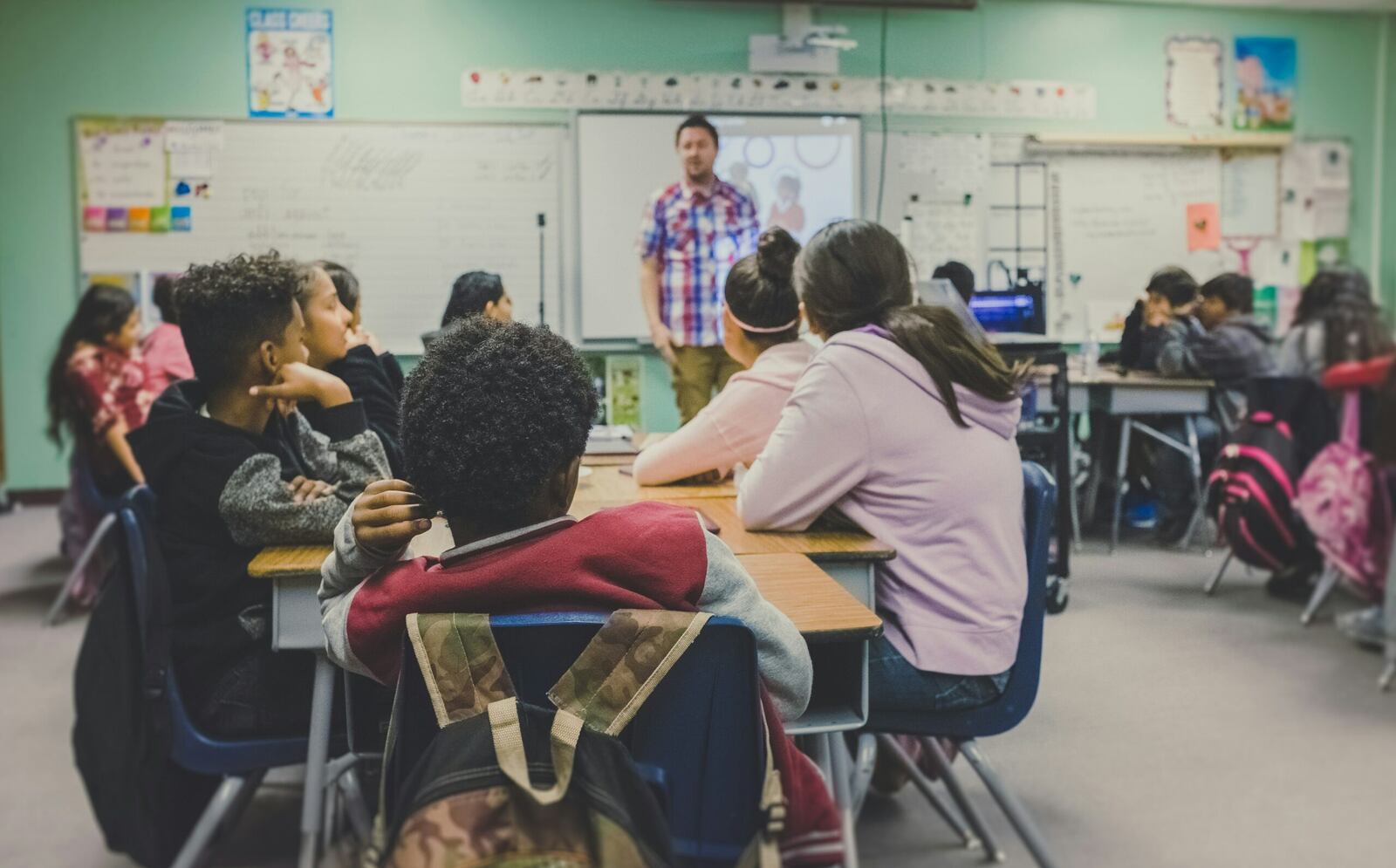Alex Lawrence has seen a few major technological innovations in his day: the World Wide Web, the smartphone and electric vehicles, to name a few. For Lawrence and many others, the latest jaw-dropping piece of tech has been the advancement of artificial intelligence (AI) and the products that bring AI to the everyday consumer.
Lawrence had a profound split reaction when he first tried ChatGPT in December of 2022.
“I had two almost simultaneous thoughts,” he says. “The first one was, ‘This is unbelievable. It is amazing that they’ve made something so easy to use and so powerful.”
Then, the educator in him—Lawrence teaches courses in professional sales at Weber State University—realized, “This is the greatest cheating tool I’ve ever seen in my life.”
Lawrence has told this story a few times to various local and national publications, including the Wall Street Journal, CNN, News Nation and Forbes. He was immediately aware of the same concern many educators had while first regarding AI and ChatGPT, but decided not to run from implementing AI in his classroom. Instead, he fully embraced it.
“I’m absolutely pushing them, and in some cases, requiring them on a couple of assignments to use ChatGPT and other AI tools on their work,” Lawrence says of his students. “We help them get good at it so they can use the tools in a way that isn’t cheating—it’s augmenting.”
Education experts agree on AI
It’s not hard to imagine that many other educators felt the same way as Lawrence when they first encountered ChatGPT, recognizing it as the greatest cheating tool yet.
However, now that the initial shock has worn off and as AI tools become more and more commonplace, many agree that AI will only proliferate even further. The top minds in education now praise the power of AI, just like Lawrence.
In July, Harvard’s Graduate School of Education published an article titled “Embracing Artificial Intelligence in the Class,” claiming that “generative AI tools can reflect our failure of imagination, and that is when the real learning starts.”
One of the Harvard lecturers quoted in the article, Houman Harouni, stated that educators need to “help the next generation face the reality of the world and develop instruments and ways of navigating this reality with integrity.” Ignoring AI, especially as the rest of the world does not, would be a grave mistake by educators. Harouni and Lawrence say the trick is to teach students to use it positively and productively.
“Where we want to get to is a place where you’re dancing with it, dancing with robots,” Harouni said in the article.
Blazing new trails with AI
Combining technology and education—and putting both in the form of a game—is nothing new. Former students of a certain age will remember inserting floppy disks of Oregon Trail into now-primitive machines in their elementary school computer lab. After that, educational CD-ROMs became commonplace at school and at home.
AI can provide the next generation of education and game-driven learning.
Graham Bany, who teaches high school English in the Jordan School District, has found a way to build his own text-based role-playing games, much like Oregon Trail, using AI and a Utah-based company, SchoolAI.
In the AI “Spaces”—as SchoolAI calls them—Bany’s students are taken through a “choose your own adventure” style game, imagining a dystopian future for a business industry they’ve discussed in class. The game gets the students’ imaginations churning and prepares them to write an essay on their research and the events taking place in the Space.
“I give them a home that’s really a prewriting activity in disguise that then leads into the actual academic work,” Bany says. “It’s part of the way I run my classroom, creating unique experiences that are meaningful, that allow the kids to have fun, but also still have that learning twist.”
Ryan Holdaway, chief of staff at SchoolAI’s Lehi office, calls Bany a “top-10 teacher in the country as far as using AI.” But, he explains, Bany is an AI leader because of his thoughtful implementation of the technology in the classroom, not any tech-savviness itself.
SchoolAI, Holdaway says, is focused on making AI extremely approachable for students and teachers.
“Our platform strives to remove the complexity of using an AI tool in the classroom,” Holdaway says. “You don’t have to be a programmer or anything like that in order to leverage these tools. We want to give simple, easy ways for teachers to use the technology in their classroom because we think that it’s really powerful.”

How to best utilize AI
Not long ago, the internet turned the grind of homework on its head. Going to the library was replaced with going online. Lawrence believes entering a prompt into ChatGPT is the next version of this.
In his mind, using a new technology, especially one that has not been polluted by commercialism—yet—can give students a better start to their learning journey.
“ChatGPT and other tools like it are not gamed by SEO, first-page rankings or ads, so [a student’s] starting point is better. And since their starting point is better, their ending point is better,” Lawrence says.
Above all, Lawrence believes AI will reduce a great deal of grunt work for human users. The work done in his classes involves a lot of written correspondence. Using ChatGPT, students are spared hours typing out emails or direct messages. Now, they spend more time on creative thinking and problem-solving.
“Cold calling, emailing and texting—I don’t think there are a lot of people who love doing that,” Lawrence says. “It’s something that has to be learned, but AI can help that learning occur so much faster that you get to work more on the fun stuff.”
Lawrence uses AI to save time in his role as an educator as well. To keep his lectures fresh, he has spent time each year updating and improving classroom material. Now, he breathes new life into his teaching with AI-suggested enhancements, shortening the time it takes to revitalize his lectures while enriching the revisions.
“It’s a brilliant editor in terms of editing my original content and helping me make it better,” he says.
Endlessly patient
When AI is implemented in a classroom, it doesn’t matter how many times it takes to get a lesson across to a student. Holdaway calls AI’s limitless ability to rephrase concepts or suggest new ways of thinking as “endlessly patient.”
Something that could not be said of most humans.
“It doesn’t get bored and doesn’t run out of content or stories. If the kid continues not to get it or struggle, the AI will sit with them and continue to explain and break it down and repeat itself until the kid crosses the threshold,” Holdaway says.
In addition to being a platform for a fun, educational game or experience, SchoolAI’s Spaces serve as a highly individualized, one-on-one learning environment. Holdaway says they’re able to meet the students where they currently are and push them along their educational progression.
On the back end of a SchoolAI Space, the teacher can get real-time data and insights on their students’ progress, strengths, weaknesses and—importantly—motivation.
The fusion of individualized learning and instant feedback is invaluable to instructors like Bany. It’s much better than the old days of peer reviews and edits, he explains.
“What I get to do now is check in and spend meaningful time with the kids, looking at their writing and helping to reteach the things that they need help with,” Bany says. “Instead of running a class where I have to have the kids help teach each other, I use the AI to accurately identify issues. Then, I can find the students that need individual support and spend more time with them.”
The dangers of AI in the classroom
Still, give students the keys to the world’s greatest cheating tool, and chances are, some will use AI irresponsibly.
Lawrence has guarded against this by instructing his students to be extremely transparent when using AI to complete their assignments. Students must attach screenshots of their prompts and the responses they get so Lawrence can see their line of thinking. That, along with frequent discussions during his lectures, lets him know that the knowledge he’s teaching is being received.
“I tell them, ‘Hey, you don’t have to hide it. I want you to use it and other tools. If you find other tools, tell me what they are and share them with me and the class.’ I’ve tried to incentivize them to not hide it,” Lawrence says.
In the year or so in which he’s had an AI-friendly classroom, Lawrence has caught just two students for cheating or violating his rules. When he confronted them on his suspicions, they confessed and agreed to redo their work by following the rules.
Other than that, Lawrence has been pleased with his students’ compliance and responsible use of AI.
“I’d be remiss if I didn’t say I’m still worried about it in many ways and where it shortcuts the learning process,” Lawrence voices. “I’m not naive to think that’s not happening. You have to make the best of it and hopefully inspire students to not go down that dark path, even though some will still choose to.”
The other major concern regarding AI is somewhat out of educators’ hands. AI programs are trained with inputted information and data. If the information is biased or incorrect, chances are good that the output could also be skewed. Researchers have also seen AI create responses on its own, completely detached from a basis in reality, which they refer to as “hallucinations.”
But Lawrence, who closely follows AI developments, believes that the funding and engineering talent going into this space will eventually reduce hallucinations to “virtually zero.”
The future of AI and education
The truth is, whether or not educators and school administrators like it, AI is here to stay. “The genie’s out of the bottle,” Lawrence told Utah Business back in July. He lauds Weber State University and the professional sales department for supporting his innovative and entrepreneurial efforts. The Ogden-based school isn’t the only college in the state backing AI.
Brigham Young University unveiled a new degree in machine learning at the start of the fall 2023 semester. The University of Utah launched a part-time Professional Education AI Boot Camp program and released guidelines to allow all students to use ChatGPT in their coursework. Utah State University and Utah Tech University also have defined guidelines on generative AI for their students.
For the most part, educators are optimistic about AI and its place in the classroom. A survey by Instructure found that 54.5 percent of teachers, students and administrators feel either very positive or positive about the new technology. The survey also found that over half of respondents have not yet used AI to complete their schoolwork.
As for where AI could be used most effectively, both teachers and students agreed that generative AI is most useful in science, math, and English and least effective—for now—in social studies or foreign language classes.
After all, the job of an educator is to prepare students to enter the real world. AI is a part of it now.
“I’d better send prepared students into the workforce; that’s my job,” Lawrence says. “I certainly have work to do on improving my teaching, and that’ll never stop. But mostly, I try really hard to have them learn the tools that I feel they’re going to use if they start their first real job the next day.”

